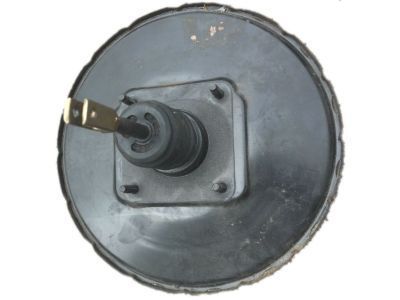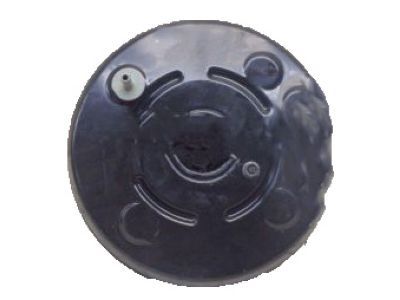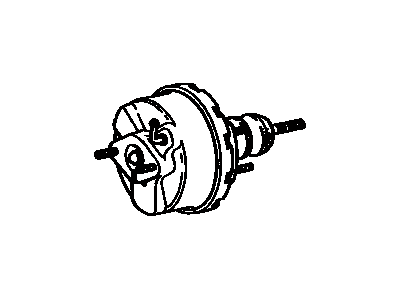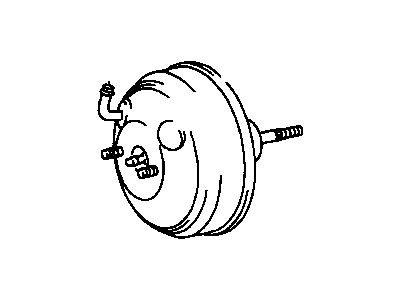

My Garage
My Account
Cart
Genuine Toyota Sienna Brake Booster
Brake Power Booster- Select Vehicle by Model
- Select Vehicle by VIN
Select Vehicle by Model
orMake
Model
Year
Select Vehicle by VIN
For the most accurate results, select vehicle by your VIN (Vehicle Identification Number).
12 Brake Boosters found
Toyota Sienna Brake Booster Assy, W/Master Cylinder
Part Number: 47200-08071$981.76 MSRP: $1465.90You Save: $484.14 (34%)Ships in 1-3 Business DaysToyota Sienna Booster Assembly, Brake
Part Number: 44610-08071$582.05 MSRP: $869.09You Save: $287.04 (34%)Ships in 1-3 Business DaysToyota Sienna Brake Booster Assy, W/Master Cylinder
Part Number: 47200-08081$981.76 MSRP: $1465.90You Save: $484.14 (34%)Toyota Sienna Brake Booster Assy, W/Master Cylinder
Part Number: 47200-08070$981.76 MSRP: $1465.90You Save: $484.14 (34%)Ships in 1-3 Business DaysToyota Sienna Booster Assembly, Brake
Part Number: 44610-08040$635.08 MSRP: $948.26You Save: $313.18 (34%)Ships in 1-3 Business DaysToyota Sienna Booster Assembly, Brake
Part Number: 44610-08090$730.33 MSRP: $1090.48You Save: $360.15 (34%)Ships in 1-3 Business DaysToyota Sienna Booster Assembly, Brake
Part Number: 44610-08010$936.05 MSRP: $1397.65You Save: $461.60 (34%)Ships in 1-3 Business DaysToyota Sienna Brake Booster Assy, W/Master Cylinder
Part Number: 47200-08080$981.76 MSRP: $1465.90You Save: $484.14 (34%)Ships in 1-3 Business DaysToyota Sienna Booster Assembly, Brake
Part Number: 44610-08070$582.05 MSRP: $869.09You Save: $287.04 (34%)Ships in 1-3 Business DaysToyota Sienna Booster Assembly, Brake
Part Number: 44610-08080$618.87 MSRP: $924.06You Save: $305.19 (34%)Ships in 1-3 Business DaysToyota Sienna Booster Assembly, Brake
Part Number: 44610-08020$955.80 MSRP: $1427.15You Save: $471.35 (34%)Ships in 1-3 Business Days
Toyota Sienna Brake Booster
If you are in demand for superior quality and affordable OEM Toyota Sienna Brake Booster, then shop with us! We own a wide range of the reduced-priced genuine Toyota Sienna Brake Booster. You can purchase in confidence as all parts come with a manufacturer's warranty. Any issues with our products? No need to worry as we have a hassle-free return policy to guide you every step of the way.
Toyota Sienna Brake Booster Parts Questions & Experts Answers
- Q: How to operate, check, remove, and install a power brake booster on Toyota Sienna?A:To perform an operating check, depress the brake pedal several times with the engine off to ensure there's no change in the pedal reserve distance, then start the engine and check if the pedal goes down slightly, indicating normal operation. For an airtightness check, start the engine and turn it off after one or two minutes, then depress the brake pedal slowly several times; if the pedal depresses less each time, the booster is airtight. While the engine is running, depress the brake pedal and stop the engine with the pedal depressed; if there's no change in the pedal reserve travel after holding for 30 seconds, the booster is airtight. Power brake booster units should not be disassembled due to their complexity and critical relationship to brake performance; instead, they should be replaced with a new or rebuilt unit. Begin removal by taking off the cowl cover, then remove the Brake Master Cylinder with the remote reservoir and hoses. Pull the ABS actuator and its mounting bracket out enough for brake booster removal, disconnect the vacuum hose from the brake booster carefully, and inside the vehicle, remove the driver's knee bolster. Use a flashlight to locate the clevis connecting the booster pushrod to the brake pedal, remove the clevis-pin retaining clip, and pull out the pin. Remove the four nuts and washers holding the brake booster to the firewall, then slide the booster straight out until the studs clear the holes. For installation, follow the reverse of removal, ensuring to tighten the clevis locknut and booster mounting nuts to the specified torque. If installing a new power brake booster unit, check the pushrod clearance by measuring the distances from various points and calculating the pushrod clearance; adjust the pushrod length as necessary to achieve the correct clearance. After final installation of the master cylinder and brake hoses, adjust the brake pedal height and freeplay, and bleed the system.
Related Toyota Sienna Parts
Browse by Year
2020 Brake Booster 2019 Brake Booster 2018 Brake Booster 2017 Brake Booster 2016 Brake Booster 2015 Brake Booster 2014 Brake Booster 2013 Brake Booster 2012 Brake Booster 2011 Brake Booster 2010 Brake Booster 2009 Brake Booster 2008 Brake Booster 2007 Brake Booster 2006 Brake Booster 2005 Brake Booster 2004 Brake Booster 2003 Brake Booster 2002 Brake Booster 2001 Brake Booster 2000 Brake Booster 1999 Brake Booster 1998 Brake Booster















